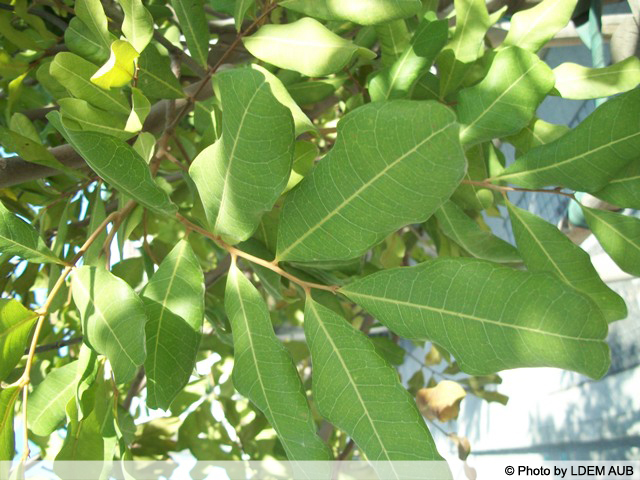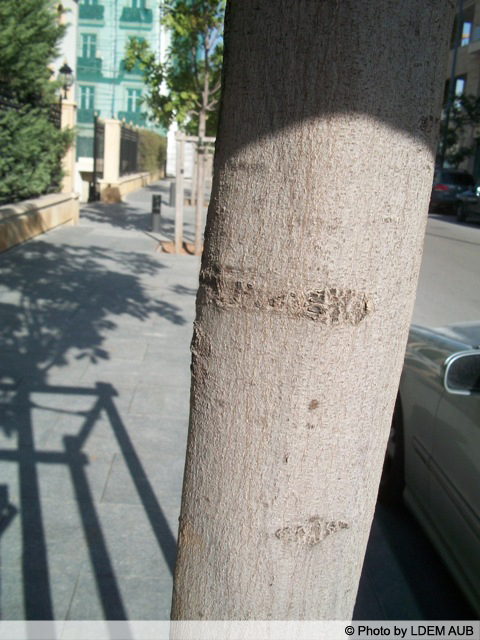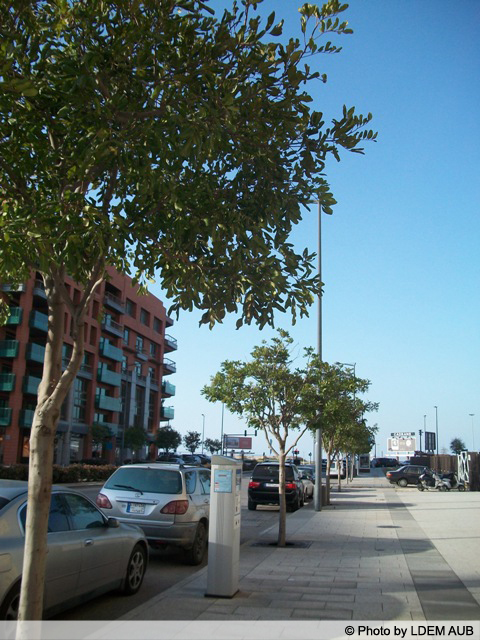Cupaniopsis anacardioides (Carrotwood, Tuckeroo)
Carrotwood is a evergreen treee with green compound leaves that smell like fresh carrot when they are crushed, hence the name. It produces large amounts of orange-red fruits which attract birds and small animals, and may be a litter problem. It grows in full sun and all soil types, and handles salt, heat, drought, and wet soil with ease. Selective pruning in the crown will allow turf to grow underneath; otherwise, it casts a dense shade. It is known to be invasive in some areas.
- Landscape Information
- Botanical Description
- Horticulture Management
-
Forest & Kim Starr [CC BY 3.0 (http://creativecommons.org/licenses/by/3.0)], via Wikimedia Commons
-
By Ian Sutton (Flickr) [CC-BY-2.0 (http://creativecommons.org/licenses/by/2.0)], via Wikimedia Commons
-
By Tatiana Gerus from Brisbane, Australia [CC-BY-2.0 (http://creativecommons.org/licenses/by/2.0)], via Wikimedia Commons
-
-
-
Search plant on Google
Download as PDF
-
French Name: Cupaniopsis, bois de carotte
-
Plant type: Tree
-
Origin: Australia
-
Heat Zones: 8 to 13
Hardiness Zones: 9 to 13
-
Uses: Specimen, Shade, Wildlife, Street, Pollution Tolerant / Urban
-
Size/Shape
Growth Rate: Moderate
Tree Shape: Round
Canopy Symmetry: Symmetrical
Canopy Density: Medium
Canopy Texture: Medium
Height at Maturity: 5 to 8 m, 8 to 15 m
Spread at Maturity: 8 to 10 meters, 10 to 15 meters
Time to Ultimate Height: 10 to 20 Years
-
Forest & Kim Starr [CC BY 3.0 (http://creativecommons.org/licenses/by/3.0)], via Wikimedia Commons
-
By Ian Sutton (Flickr) [CC-BY-2.0 (http://creativecommons.org/licenses/by/2.0)], via Wikimedia Commons
-
By Tatiana Gerus from Brisbane, Australia [CC-BY-2.0 (http://creativecommons.org/licenses/by/2.0)], via Wikimedia Commons
-
-
-
Search plant on Google
Download as PDF
-
Foliage
Leaf Arrangement : Alternate
Leaf Venation: Pinnate
Leaf Persistance: Evergreen
Leaf Type: Odd Pinnately compund
Leaf Blade: 5 - 10 cm
Leaf Shape: Oblong
Leaf Margins: Undulate, Entire
Leaf Texture: Glossy, Medium
Leaf Scent: Pleasant
Color(growing season): Green
Color(changing season): Green
-
Flower
Flower Size Range: 10 - 20
Flower Type: Panicle
Flower Sexuality: Monoecious (Bisexual)
Flower Scent: No Fragance
Flower Color: Green, White
Seasons: Summer
-
Trunk
Trunk has Crownshaft: No
Trunk Susceptibility to Breakage: Generally resists breakage
Number of Trunks: Single Trunk
Trunk esthetic Values: Showy
-
Fruit
Fruit Type: Fleshy
Fruit Showiness: Yes
Fruit Size Range: 0 - 1.5
Fruit Color: Yellow, Orange, Red
Seasons: Summer
-
Forest & Kim Starr [CC BY 3.0 (http://creativecommons.org/licenses/by/3.0)], via Wikimedia Commons
-
By Ian Sutton (Flickr) [CC-BY-2.0 (http://creativecommons.org/licenses/by/2.0)], via Wikimedia Commons
-
By Tatiana Gerus from Brisbane, Australia [CC-BY-2.0 (http://creativecommons.org/licenses/by/2.0)], via Wikimedia Commons
-
-
-
Search plant on Google
Download as PDF
-
Tolerance
Heat Tolerance: Yes
Salt Tolerance: Good
-
Requirements
Soil Requirements: Clay, Loam, Sand
Soil Ph Requirements: Acidic, Neutral, Alkaline
Water Requirements: Moderate
Light Requirements: Full
-
Management
Susceptibility to Pests and Diseases: No
Pruning Requirements: Needed, to develop a strong structure
Fruit/ Leaves/ Flowers litter: Yes
Life Span: 25-50 years
Diseases: Wilts
Edible Parts: None
Plant Propagation: Seed



